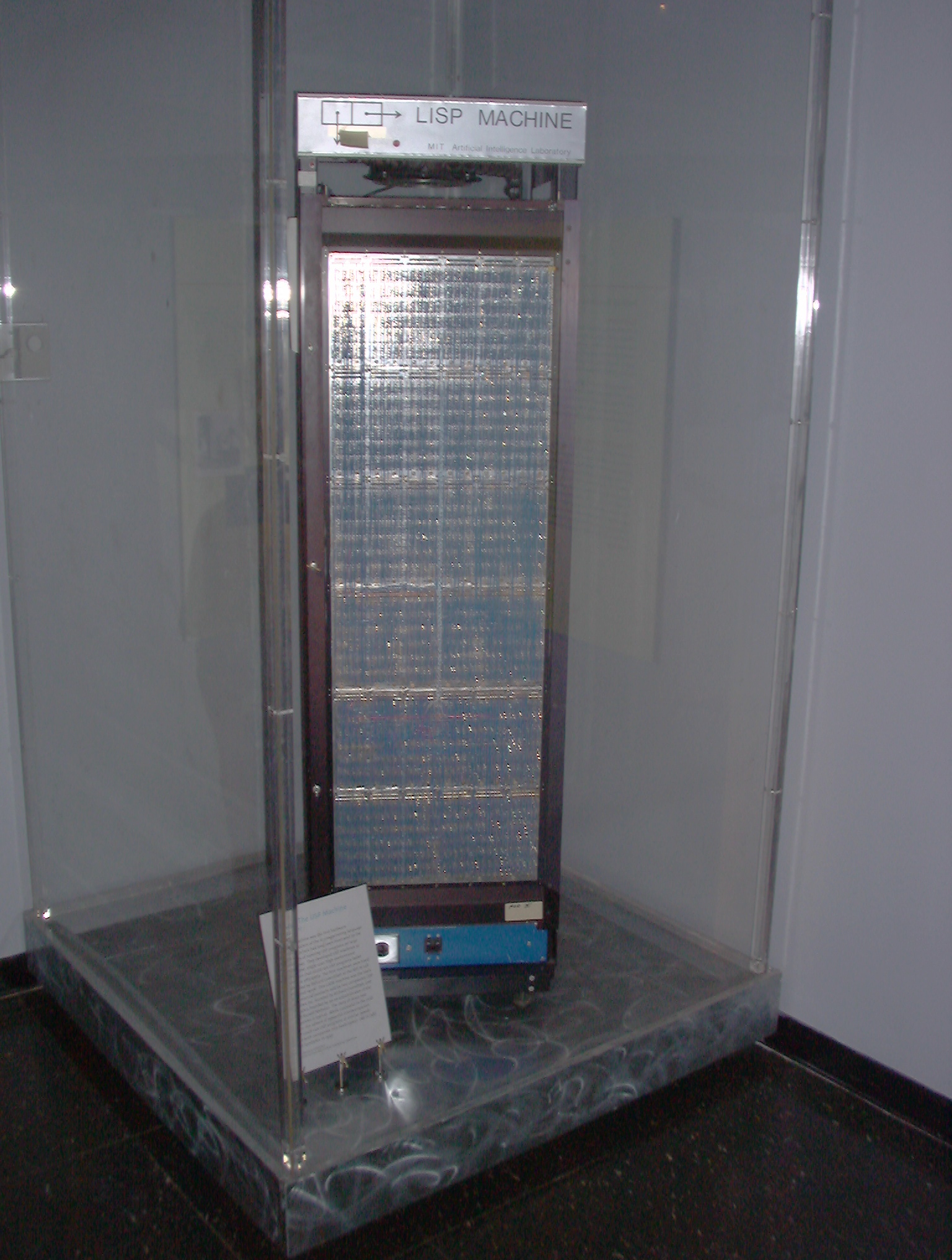|
ISLISP
ISLISP (also capitalized as ISLisp) is a programming language in the Lisp family standardized by the International Organization for Standardization (ISO) and International Electrotechnical Commission (IEC) joint working group ISO/IEC JTC 1/SC 22/WG 16 (commonly termed simply SC22/WG16 or WG16). The primary output of this working group was an international standard, published by ISO. The standard was updated in 2007 and republished as ISO/IEC 13816:2007(E). Although official publication was through ISO, versions of the ISLISP language specification are available that are believed to be in the public domain. The goal of this standards effort was to define a small, core language to help bridge the gap between differing dialects of Lisp. It attempted to accomplish this goal by studying primarily Common Lisp, EuLisp, Le Lisp, and Scheme and standardizing only those features shared between them. Design goals ISLISP has these design goals: * Compatible with extant Lisp dialects w ... [...More Info...] [...Related Items...] OR: [Wikipedia] [Google] [Baidu] |
OpenLisp
OpenLisp is a programming language in the Lisp family developed by Christian Jullien from Eligis. It conforms to the international standard for ISLISP published jointly by the International Organization for Standardization (ISO) and International Electrotechnical Commission (IEC), ISO/IEC 13816:1997(E), revised to ISO/IEC 13816:2007(E). Written in the programming languages C and Lisp, it runs on most common operating systems. OpenLisp is designated an ISLISP implementation, but also contains many Common Lisp-compatible extensions (hashtable, readtable, package, defstruct, sequences, rational numbers) and other libraries (network socket, regular expression, XML, Portable Operating System Interface (POSIX), SQL, Lightweight Directory Access Protocol (LDAP)). OpenLisp includes an interpreter associated to a read–eval–print loop (REPL), a Lisp Assembly Program (LAP) and a backend compiler for the language C. Goals The main goal of this Lisp version is to implement a f ... [...More Info...] [...Related Items...] OR: [Wikipedia] [Google] [Baidu] |
Lisp (programming Language)
Lisp (historically LISP) is a family of programming languages with a long history and a distinctive, fully parenthesized prefix notation. Originally specified in 1960, Lisp is the second-oldest high-level programming language still in common use, after Fortran. Lisp has changed since its early days, and many dialects have existed over its history. Today, the best-known general-purpose Lisp dialects are Common Lisp, Scheme, Racket and Clojure. Lisp was originally created as a practical mathematical notation for computer programs, influenced by (though not originally derived from) the notation of Alonzo Church's lambda calculus. It quickly became a favored programming language for artificial intelligence (AI) research. As one of the earliest programming languages, Lisp pioneered many ideas in computer science, including tree data structures, automatic storage management, dynamic typing, conditionals, higher-order functions, recursion, the self-hosting compiler, and the rea ... [...More Info...] [...Related Items...] OR: [Wikipedia] [Google] [Baidu] |
Le Lisp
Le Lisp (also Le_Lisp and Le-Lisp) is a programming language, a dialect of the language Lisp. It was developed at the French Institute for Research in Computer Science and Automation (INRIA), to be an implementation language for a very large scale integration (VLSI) workstation being designed under the direction of Jean Vuillemin. ''Le Lisp'' also had to run on various incompatible platforms (mostly running Unix operating systems) that were used by the project. The main goals for the language were to be a powerful post- Maclisp version of Lisp that would be portable, compatible, extensible, and efficient. Jérôme Chailloux led the ''Le Lisp'' team, working with Emmanuel St. James, Matthieu Devin, and Jean-Marie Hullot in 1980. The dialect is historically noteworthy as one of the first Lisp implementations to be available on both the Apple II and the IBM PC. On 2020-01-08, INRIA agreed to migrate the source code to the 2-clause BSD License which allowed few native ports from ILOG ... [...More Info...] [...Related Items...] OR: [Wikipedia] [Google] [Baidu] |
EuLisp
EuLisp is a statically and dynamically Scope (programming), scoped Lisp (programming language), Lisp dialect developed by a loose formation of industrial and academic Lisp users and developers from around Europe. The Standardization, standardizers intended to create a new Lisp (programming language), Lisp "less encumbered by the past" (compared to Common Lisp), and not so Minimalism (computing), minimalist as Scheme (programming language), Scheme. Another objective was to integrate the object-oriented programming paradigm well. It is a third-generation programming language. Origin The language definition process first began in a meeting in 1985 in Paris and took several years. The complete specification and a first implementation (Interpreter (computing), interpreted-only) were made available in 1990. Distinguishing features Its main traits are that it is a Lisp-1 (no separate function and variable namespaces), has a ''Common Lisp Object System'' (CLOS) style generic-function ... [...More Info...] [...Related Items...] OR: [Wikipedia] [Google] [Baidu] |
Common Lisp
Common Lisp (CL) is a dialect of the Lisp programming language, published in ANSI standard document ''ANSI INCITS 226-1994 (S20018)'' (formerly ''X3.226-1994 (R1999)''). The Common Lisp HyperSpec, a hyperlinked HTML version, has been derived from the ANSI Common Lisp standard. The Common Lisp language was developed as a standardized and improved successor of Maclisp. By the early 1980s several groups were already at work on diverse successors to MacLisp: Lisp Machine Lisp (aka ZetaLisp), Spice Lisp, NIL and S-1 Lisp. Common Lisp sought to unify, standardise, and extend the features of these MacLisp dialects. Common Lisp is not an implementation, but rather a language specification. Several implementations of the Common Lisp standard are available, including free and open-source software and proprietary products. Common Lisp is a general-purpose, multi-paradigm programming language. It supports a combination of procedural, functional, and object-oriented programming para ... [...More Info...] [...Related Items...] OR: [Wikipedia] [Google] [Baidu] |
Multi-paradigm Programming Language
Programming paradigms are a way to classify programming languages based on their features. Languages can be classified into multiple paradigms. Some paradigms are concerned mainly with implications for the execution model of the language, such as allowing Side effect (computer science), side effects, or whether the sequence of operations is defined by the execution model. Other paradigms are concerned mainly with the way that code is organized, such as grouping a code into units along with the state that is modified by the code. Yet others are concerned mainly with the style of syntax and grammar. Common programming paradigms include: * imperative programming, imperative in which the programmer instructs the machine how to change its state, ** procedural programming, procedural which groups instructions into procedures, ** object-oriented programming, object-oriented which groups instructions with the part of the state they operate on, * declarative programming, declarative ... [...More Info...] [...Related Items...] OR: [Wikipedia] [Google] [Baidu] |
Berkeley Software Distribution
The Berkeley Software Distribution or Berkeley Standard Distribution (BSD) is a discontinued operating system based on Research Unix, developed and distributed by the Computer Systems Research Group (CSRG) at the University of California, Berkeley. The term "BSD" commonly refers to its open-source descendants, including FreeBSD, OpenBSD, NetBSD, and DragonFly BSD. BSD was initially called Berkeley Unix because it was based on the source code of the original Unix developed at Bell Labs. In the 1980s, BSD was widely adopted by workstation vendors in the form of proprietary Unix variants such as DEC Ultrix and Sun Microsystems SunOS due to its permissive licensing and familiarity to many technology company founders and engineers. Although these proprietary BSD derivatives were largely superseded in the 1990s by UNIX SVR4 and OSF/1, later releases provided the basis for several open-source operating systems including FreeBSD, OpenBSD, NetBSD, DragonFly BSD, Darwin, and Tr ... [...More Info...] [...Related Items...] OR: [Wikipedia] [Google] [Baidu] |
Public Domain
The public domain (PD) consists of all the creative work to which no exclusive intellectual property rights apply. Those rights may have expired, been forfeited, expressly waived, or may be inapplicable. Because those rights have expired, anyone can legally use or reference those works without permission. As examples, the works of William Shakespeare, Ludwig van Beethoven, Leonardo da Vinci and Georges Méliès are in the public domain either by virtue of their having been created before copyright existed, or by their copyright term having expired. Some works are not covered by a country's copyright laws, and are therefore in the public domain; for example, in the United States, items excluded from copyright include the formulae of Newtonian physics, cooking recipes,Copyright Protection No ... [...More Info...] [...Related Items...] OR: [Wikipedia] [Google] [Baidu] |
International Standard
international standard is a technical standard developed by one or more international standards organization, standards organizations. International standards are available for consideration and use worldwide. The most prominent such organization is the International Organization for Standardization (ISO). Other prominent international standards organizations including the International Telecommunication Union (ITU) and the International Electrotechnical Commission (IEC). Together, these three organizations have formed the World Standards Cooperation alliance. Purpose International standards may be used either by direct application or by a process of modifying an international standard to suit local conditions. Adopting international standards results in creating national standards that are equivalent, or substantially the same as international standards in technical content, but may have (i) editorial differences as to appearance, use of symbols and measurement units, substitution ... [...More Info...] [...Related Items...] OR: [Wikipedia] [Google] [Baidu] |
International Electrotechnical Commission
The International Electrotechnical Commission (IEC; in French: ''Commission électrotechnique internationale'') is an international standards organization that prepares and publishes international standards for all electrical, electronic and related technologies – collectively known as " electrotechnology". IEC standards cover a vast range of technologies from power generation, transmission and distribution to home appliances and office equipment, semiconductors, fibre optics, batteries, solar energy, nanotechnology and marine energy as well as many others. The IEC also manages four global conformity assessment systems that certify whether equipment, system or components conform to its international standards. All electrotechnologies are covered by IEC Standards, including energy production and distribution, electronics, magnetics and electromagnetics, electroacoustics, multimedia, telecommunication and medical technology, as well as associated general disciplines such ... [...More Info...] [...Related Items...] OR: [Wikipedia] [Google] [Baidu] |
International Organization For Standardization
The International Organization for Standardization (ISO ) is an international standard development organization composed of representatives from the national standards organizations of member countries. Membership requirements are given in Article 3 of the ISO Statutes. ISO was founded on 23 February 1947, and (as of November 2022) it has published over 24,500 international standards covering almost all aspects of technology and manufacturing. It has 809 Technical committees and sub committees to take care of standards development. The organization develops and publishes standardization in all technical and nontechnical fields other than electrical and electronic engineering, which is handled by the IEC.Editors of Encyclopedia Britannica. 3 June 2021.International Organization for Standardization" ''Encyclopedia Britannica''. Retrieved 2022-04-26. It is headquartered in Geneva, Switzerland, and works in 167 countries . The three official languages of the ISO are English, F ... [...More Info...] [...Related Items...] OR: [Wikipedia] [Google] [Baidu] |
Programming Language
A programming language is a system of notation for writing computer programs. Most programming languages are text-based formal languages, but they may also be graphical. They are a kind of computer language. The description of a programming language is usually split into the two components of syntax (form) and semantics (meaning), which are usually defined by a formal language. Some languages are defined by a specification document (for example, the C programming language is specified by an ISO Standard) while other languages (such as Perl) have a dominant implementation that is treated as a reference. Some languages have both, with the basic language defined by a standard and extensions taken from the dominant implementation being common. Programming language theory is the subfield of computer science that studies the design, implementation, analysis, characterization, and classification of programming languages. Definitions There are many considerations when defining ... [...More Info...] [...Related Items...] OR: [Wikipedia] [Google] [Baidu] |




